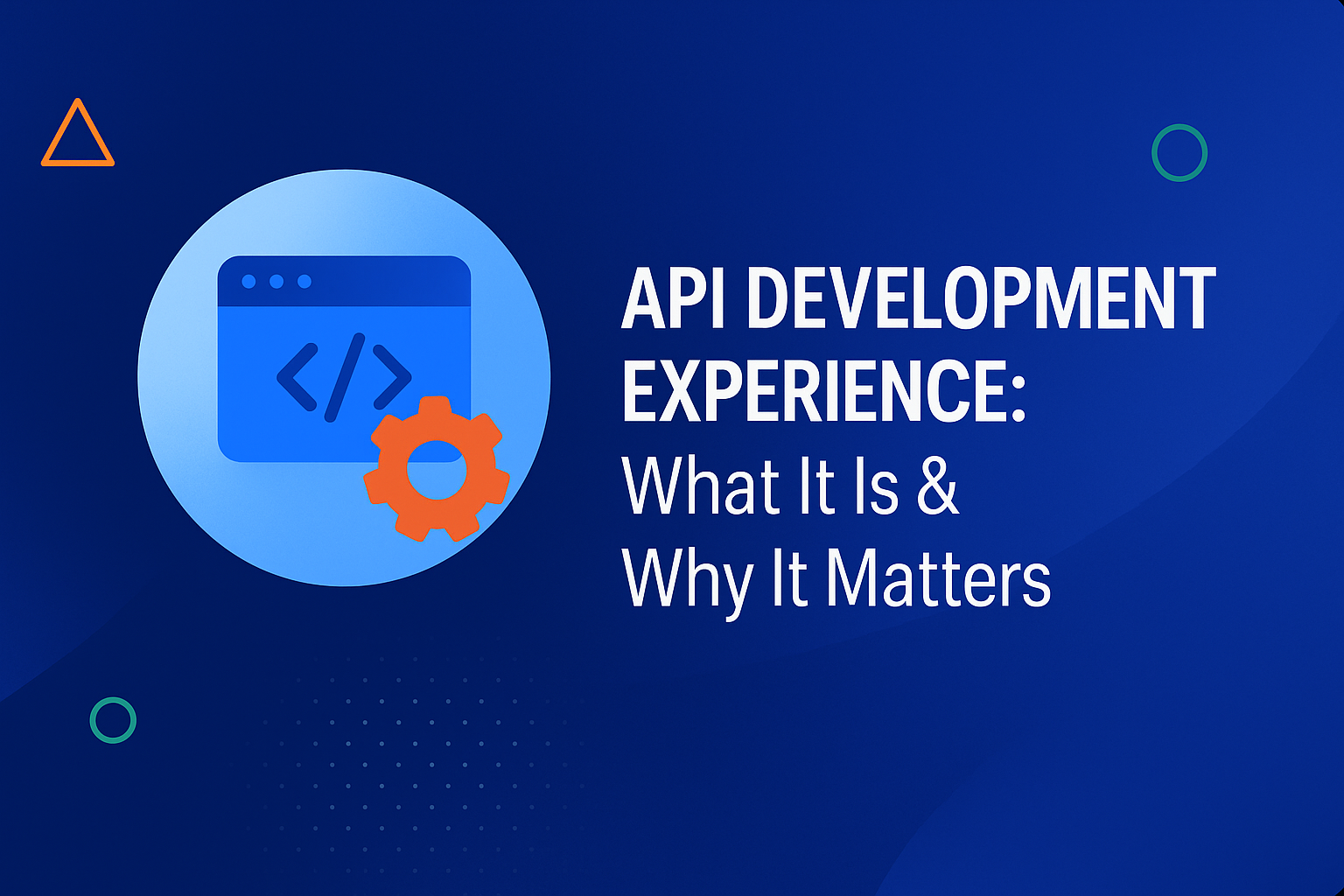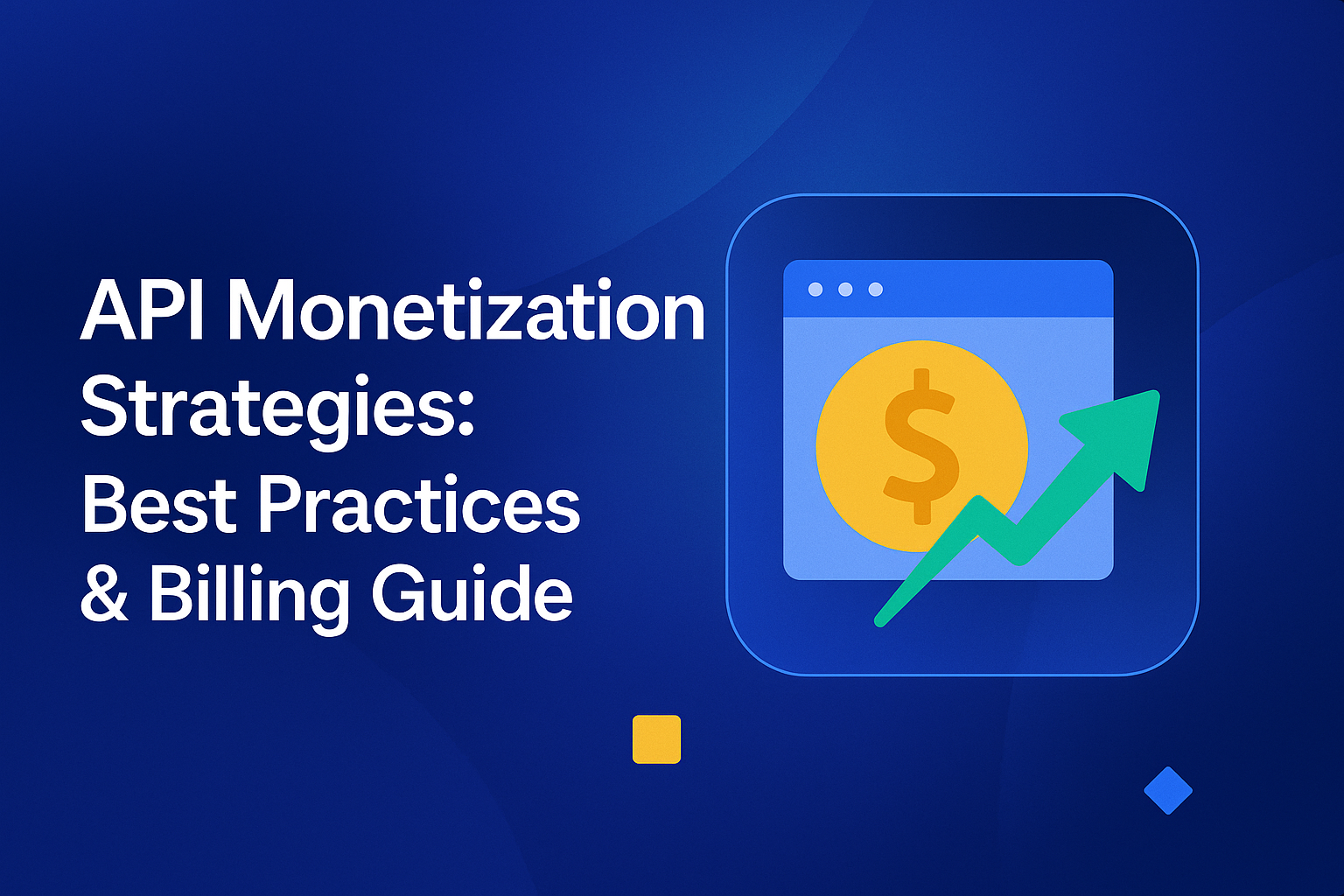
APIs have evolved from simple technical connectors into full-fledged business products that drive revenue, partnerships, and innovation.
In 2025, 53% of global CEOs planned to increase investments in APIs, and 43% of companies already derived more than 25% of their revenue from API-driven models.
By packaging APIs with clear value propositions, usage tiers, and measurable outcomes, organisations can turn them into scalable revenue engines. This approach, called API monetization, enables companies to unlock new markets, streamline integrations, and empower developers and partners alike.
From fintechs to telecoms, businesses are realising that APIs are not just infrastructure, they’re offerings. This blog explores how to build, price, and manage APIs like products, and how DigitalAPI helps simplify the journey from design to monetization.
What does “API as a product” mean?
“API as a Product” means designing, managing, and marketing an API with the same discipline and mindset applied to any commercial software product. Instead of treating an API as a technical interface that merely connects systems, organisations view it as a value-delivering asset, one that serves a defined audience, solves a specific problem, and can be measured in terms of adoption, satisfaction, and revenue.
Like any product, an API has a lifecycle: it’s researched, built, documented, versioned, supported, and iterated based on user feedback. This productization ensures that developers, whether internal teams, partners, or third parties, experience consistency, reliability, and ease of integration.
Where most definitions stop at usability, the unique shift in 2025 is intentional monetization and intelligence. APIs are no longer endpoints; they’re gateways to data, models, and capabilities that can be priced, governed, and even consumed by AI agents. Treating APIs as products now means aligning them to business goals, embedding governance, and preparing them for an AI-driven, composable enterprise ecosystem.
Real-world examples of API as products
APIs have become standalone products that fuel billion-dollar ecosystems. Instead of being hidden backend tools, they’re now core revenue streams and growth drivers for digital businesses. The best examples show how companies have built thriving developer communities, monetized access, and turned APIs into platforms that others innovate upon. Here are three real-world examples of API as a product done right:
1. Stripe API (Payments as a Service)
Stripe transformed the complex process of handling online payments into a simple API. Developers can integrate payment processing, billing, and fraud prevention in minutes. The Stripe API itself is the product, generating billions in revenue and powering startups to global enterprises.
2. Twilio API (Communication as a Product)
Twilio’s APIs enable messaging, voice, and authentication without telecom infrastructure. Its pay-as-you-go model exemplifies API monetization at scale, with developers embedding communications directly into their apps.
3. Google Maps API (Location as a Product)
Google Maps monetizes its geolocation and routing capabilities via API usage tiers. Businesses—from Uber to food delivery apps—pay per request, turning location data into a recurring, high-margin product line.
Why treat APIs as products?
Treating APIs as products is a business strategy. When APIs are managed like products, they create measurable value for both the organisation and its consumers. Here’s why this shift is crucial for enterprises in 2025:
- Unlocks new revenue streams: Productising APIs allows businesses to monetise data, services, and capabilities they already own. By offering APIs through subscription, pay-per-use, or tiered models, organisations can turn integrations into sustainable revenue channels.
- Drives developer adoption and ecosystem growth: Well-documented, reliable APIs attract developers who build complementary products and integrations. This expands a company’s ecosystem, increases usage, and fuels organic growth.
- Improves governance and consistency: Treating APIs as products enforces standards in design, versioning, and documentation. This reduces duplication, enhances quality, and ensures compliance across teams and business units.
- Increases business agility: APIs built and managed as products are modular and reusable, helping teams ship faster and respond quickly to new opportunities or regulations.
- Enhances customer and partner experience: APIs become a channel for partners and customers to access capabilities directly. Clear pricing, reliability, and documentation build trust and long-term engagement.
- Enables measurable ROI and data-driven decisions: Product thinking brings metrics, adoption, retention, revenue per API, allowing leaders to quantify impact and refine strategies based on real usage data.
- Future-proofing for AI and automation: In an AI-driven economy, APIs are not just endpoints; they’re enablers of intelligent agents and automated workflows. Treating them as products ensures they’re discoverable, secure, and ready for agentic consumption.
When and how to monetize APIs?
API monetization isn’t a one-size-fits-all decision; it’s a maturity milestone that comes once your APIs deliver consistent value, adoption, and reliability. The right timing and structured approach ensure that monetization strengthens your ecosystem rather than restricting it. Here’s a step-by-step path to do it effectively:
1. Identify high-value APIs
Start by analysing which APIs create the most business value, either through usage volume, unique data, or critical functionality. Focus on those that solve repeatable problems and have strong developer demand.
2. Validate adoption and market fit
Before charging for access, ensure there’s steady internal or external usage. Collect feedback, measure performance, and refine documentation. APIs that naturally attract developers are prime candidates for monetization.
3. Define a monetization model
Choose pricing structures that align with how your consumers extract value, like freemium, pay-per-use, subscription, or enterprise contracts. Consider both developer accessibility and profitability when designing plans.
4. Build governance and access control
Monetization without governance leads to chaos. Use policies to manage authentication, rate limits, and usage quotas. This keeps operations sustainable while ensuring fairness and compliance.
5. Implement Monetization Infrastructure
Platforms like DigitalAPI simplify this stage by unifying APIs across multiple gateways, providing governance dashboards, and enabling built-in monetization workflows. You can define pricing tiers, automate billing, and analyse usage, all from one place.

6. Launch, measure, and iterate
Once monetized, continuously monitor API performance and customer feedback. Adjust pricing, quotas, or features to optimise adoption and revenue. Treat this like any other product, launch small, learn fast, and scale intelligently.
Building infrastructure for API as a product & monetization
Building the right infrastructure for API as a product and monetization begins with reimagining your API ecosystem as a marketplace, a digital storefront where APIs are discoverable, governed, and ready for consumption.
Instead of scattered endpoints across multiple gateways, a marketplace brings visibility and order, allowing teams, partners, and even external developers to explore APIs with clear documentation, pricing, and access workflows.
At the foundation lies a strong API management layer, handling authentication, versioning, throttling, and analytics. On top of this sits the developer portal, which acts as the entry point for discovery, subscription, and onboarding. For monetization, the marketplace integrates metering, billing, and tiered access controls, ensuring that API usage translates into measurable business value.
API monetization models & pricing strategies
API monetization models define how organisations generate revenue from their APIs, while pricing strategies determine how that value is packaged and delivered to different consumer segments. In 2025, enterprises are increasingly adopting flexible, data-driven pricing to align with developer needs and evolving usage patterns. Here are the most effective models:
1. Freemium model
The freemium model offers developers basic API access for free, with paid plans unlocking advanced features, higher limits, or enterprise support. It’s designed to encourage experimentation, lower onboarding friction, and build a strong developer base before conversion. This model works best for APIs with clear upgrade paths and measurable usage growth.
Example: Postman API and RapidAPI both use freemium tiers that let developers test APIs at no cost, then upgrade for higher request volumes or premium integrations.
2. Pay-per-use (Consumption-based)
In this model, consumers pay only for the number of API calls or units consumed. It’s highly flexible, aligning cost directly with value and enabling scalability without upfront commitments. Transparent usage tracking and billing accuracy are critical to sustain trust and adoption.
Example: Google Maps API charges developers based on map loads, routes, or geocoding requests, allowing small startups and large enterprises alike to scale usage efficiently.
3. Subscription / tiered plans
Subscription models provide predictable revenue through fixed monthly or annual fees, often segmented by usage caps or feature tiers. It appeals to businesses seeking stable costs while offering room to upgrade as needs grow. Tiered plans also make it easier to manage diverse customer segments.
Example: Twilio offers tiered communication APIs for SMS, voice, and video, where higher subscription levels unlock premium throughput and service-level guarantees.
4. Revenue-share model
This approach benefits ecosystems and marketplaces where third-party developers build products using your API. Revenue is shared between the API provider and the partner based on consumption, transactions, or generated sales. It fosters collaboration and mutual growth.
Example: Amazon Web Services (AWS) Marketplace APIs enable vendors to sell software or services, sharing revenue with AWS based on usage and sales performance.
5. Enterprise licensing
Enterprise licensing offers custom pricing and contracts for large-scale consumers who need dedicated support, SLAs, or regulatory compliance. It’s ideal for APIs used in mission-critical or high-security environments like banking or healthcare.
Example: Salesforce APIs are licensed under enterprise contracts with advanced analytics, governance, and tailored SLAs, designed for large institutions integrating multiple business systems.
6. Hybrid models
Many modern API providers blend multiple pricing approaches to serve different audiences. For instance, they might offer a freemium tier for developers, subscription tiers for SMEs, and enterprise licensing for large clients. This maximises reach and revenue flexibility.
Example: Stripe combines pay-per-use and enterprise plans, offering basic usage-based billing for startups and negotiated contracts for high-volume merchants.
KPIs & metrics to track for API monetization success
Tracking the right KPIs is essential to understanding whether your API monetization strategy is actually delivering business value. Beyond technical uptime and latency, modern API products are measured on engagement, retention, and revenue contribution. Here are the most important metrics every API-driven business should monitor:
- API usage and active consumers: Measure how often your APIs are being called and by how many unique developers or applications. A steady increase in usage indicates growing adoption, while drops may signal performance or onboarding issues. Segment usage by plan type to understand free vs. Paid user engagement.
- Conversion rate from free to paid: For APIs using freemium or tiered models, this is the clearest measure of product-market fit. Track how many users move from free plans to paid tiers over time, and optimizing pricing, documentation, and support can significantly improve this conversion funnel.
- Average revenue per API (ARPA): This metric quantifies how much each API contributes to overall revenue. By tracking ARPA, organisations can identify their most valuable APIs and prioritise investment in those that deliver the highest ROI or monetization potential.
- Retention and churn rate: Retention measures how long consumers continue to use your APIs, while churn tracks how Many drop off. High retention reflects satisfaction and reliability; High churn suggests usability, cost, or support gaps that need attention.
- Time to first call (TTFC): TTFC measures how long it takes a new user to make their first successful API call after signing up. The shorter the time, the smoother the onboarding. Reducing TTFC through better documentation, sandbox access, and self-serve tools directly boosts adoption and monetization velocity.
How does DigitalAPI enable businesses to treat APIs as products and monetize them?
DigitalAPI.ai enables enterprises to seamlessly transform their APIs into governed, monetizable products. Instead of APIs sitting fragmented across multiple gateways, the platform unifies them into a single, discoverable layer, ensuring visibility, compliance, and standardisation across the organisation. Every API can be productised with defined ownership, documentation, and lifecycle controls, allowing businesses to safely expose selected APIs to external consumers, partners, or developers while maintaining strong governance and security.
At the heart of this transformation is DigitalAPI’s white-labelled API marketplace, a fully customisable portal where external consumers can explore, test, and subscribe to APIs directly. Enterprises can define usage tiers, implement pay-per-use or subscription pricing, and manage authentication and access policies automatically. The integrated governance dashboard ensures that every published API meets compliance, security, and versioning standards before reaching the marketplace.
By combining discovery, governance, and monetization under one unified platform, DigitalAPI.ai helps organisations treat APIs not as backend assets but as market-ready products, driving new revenue streams, accelerating developer adoption, and enabling secure ecosystem expansion.
So, what are you waiting for? Book a 15-min demo today to get started on your API Monetization journey.
FAQs
1. What’s the difference between an API and an API product?
An API is a technical interface that enables communication between systems, while an API product is a packaged, managed, and documented version of that interface designed for consumer use. It includes pricing, access controls, analytics, and governance, making it market-ready and measurable like any other commercial product.
2. Do all APIs need to be monetized?
Not necessarily. Many APIs exist purely to improve internal efficiency or enable ecosystem collaboration. Monetization makes sense when your API offers unique data, functionality, or value that external developers or partners would pay for. The focus should be on usage and business potential, not charging for every endpoint.
3. How do I decide the right monetization model?
Choose a model based on how consumers derive value from your API. Freemium and pay-per-use work well for wide adoption, while subscription or enterprise contracts suit high-volume, mission-critical APIs. Evaluate your audience, usage frequency, and business objectives to define the most sustainable pricing approach.
4. How does an API marketplace help in monetization?
An API marketplace acts as a central hub where developers can discover, test, and subscribe to APIs. It simplifies onboarding, standardises billing, and ensures transparency in pricing and usage. For enterprises, it transforms APIs into discoverable digital products that drive ecosystem growth and measurable revenue.
5. Why is governance critical in API monetization?
Without governance, monetization becomes risky and inconsistent. Governance ensures APIs comply with security, performance, and regulatory standards before publication. It prevents duplication, enforces access policies, and maintains version control. In essence, governance builds the trust and reliability needed to sustain API monetization at scale.
You’ve spent years battling your API problem. Give us 60 minutes to show you the solution.
.svg)







